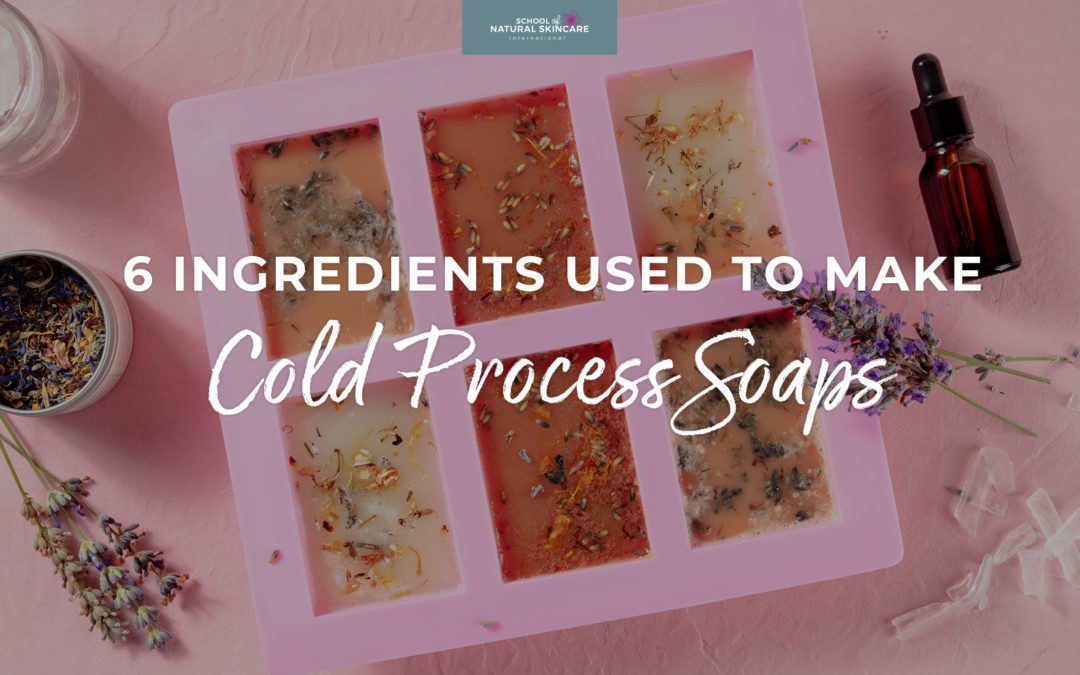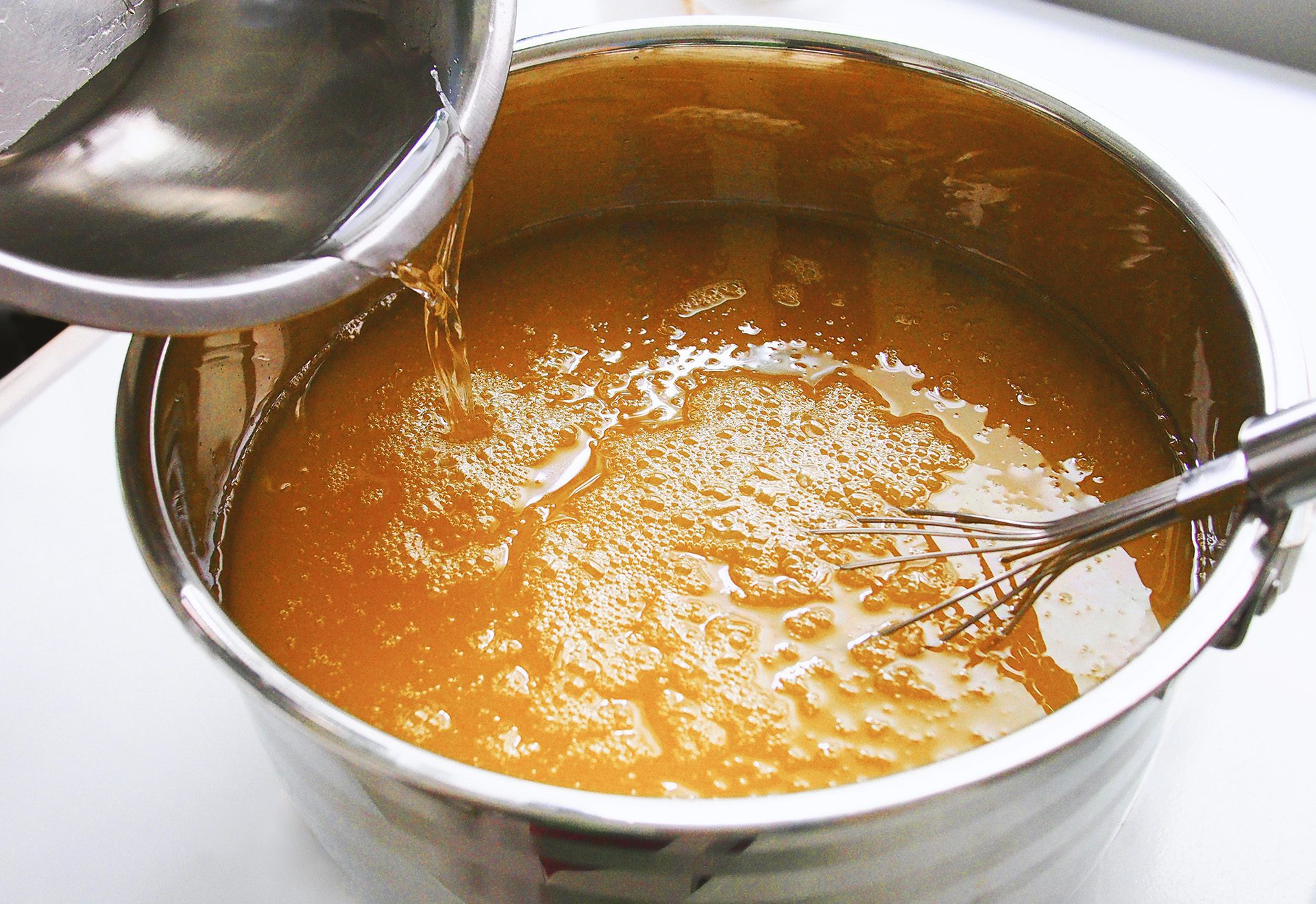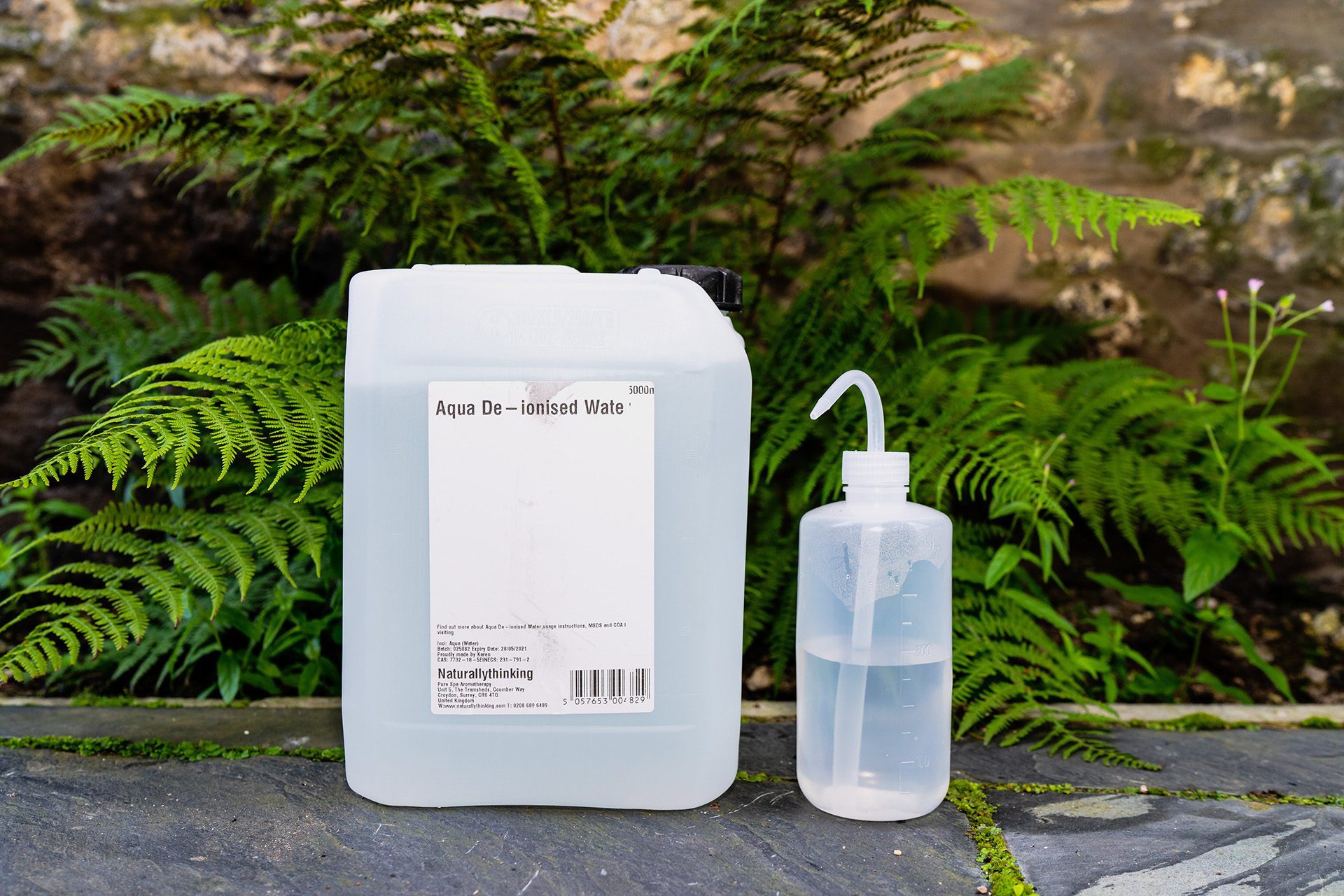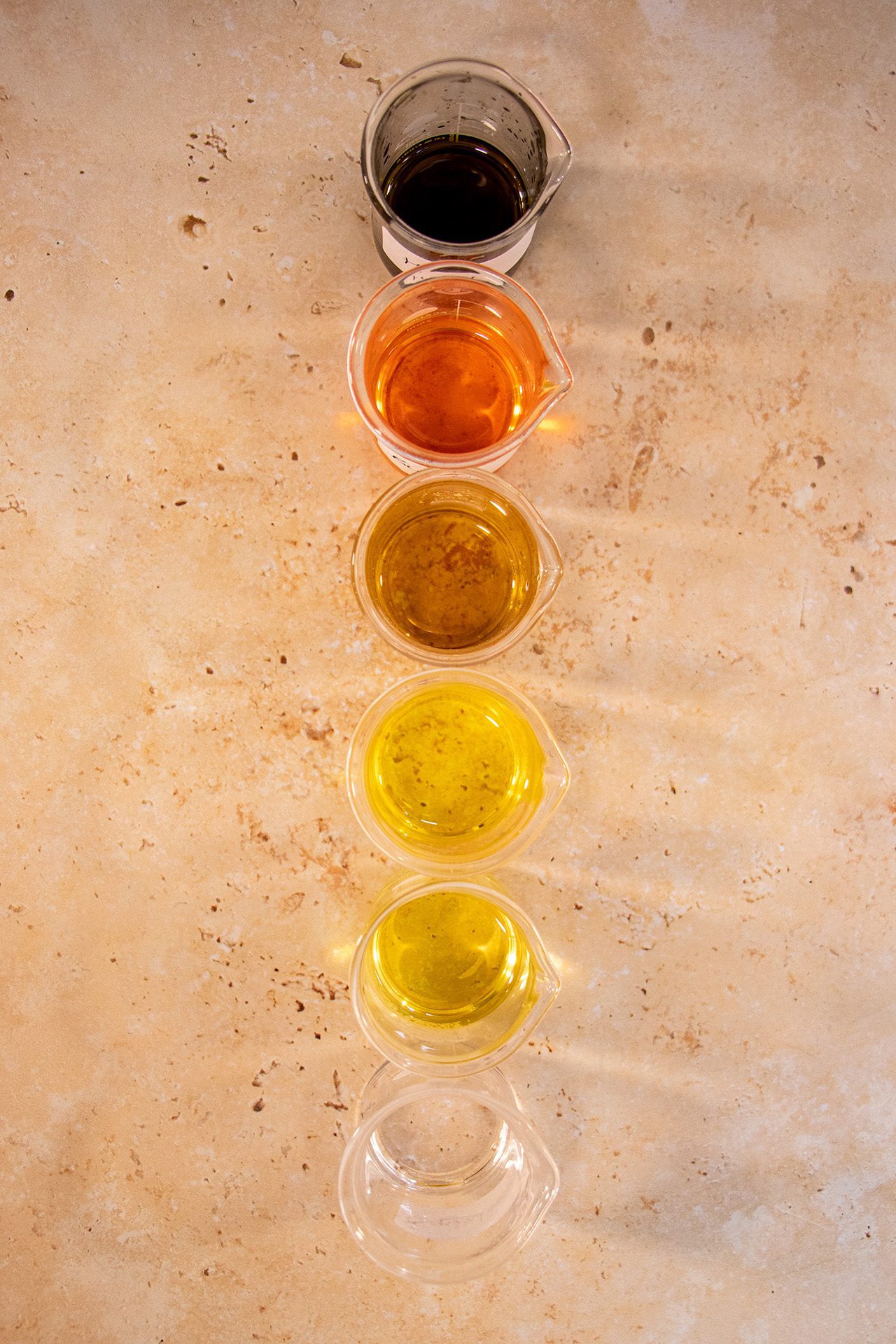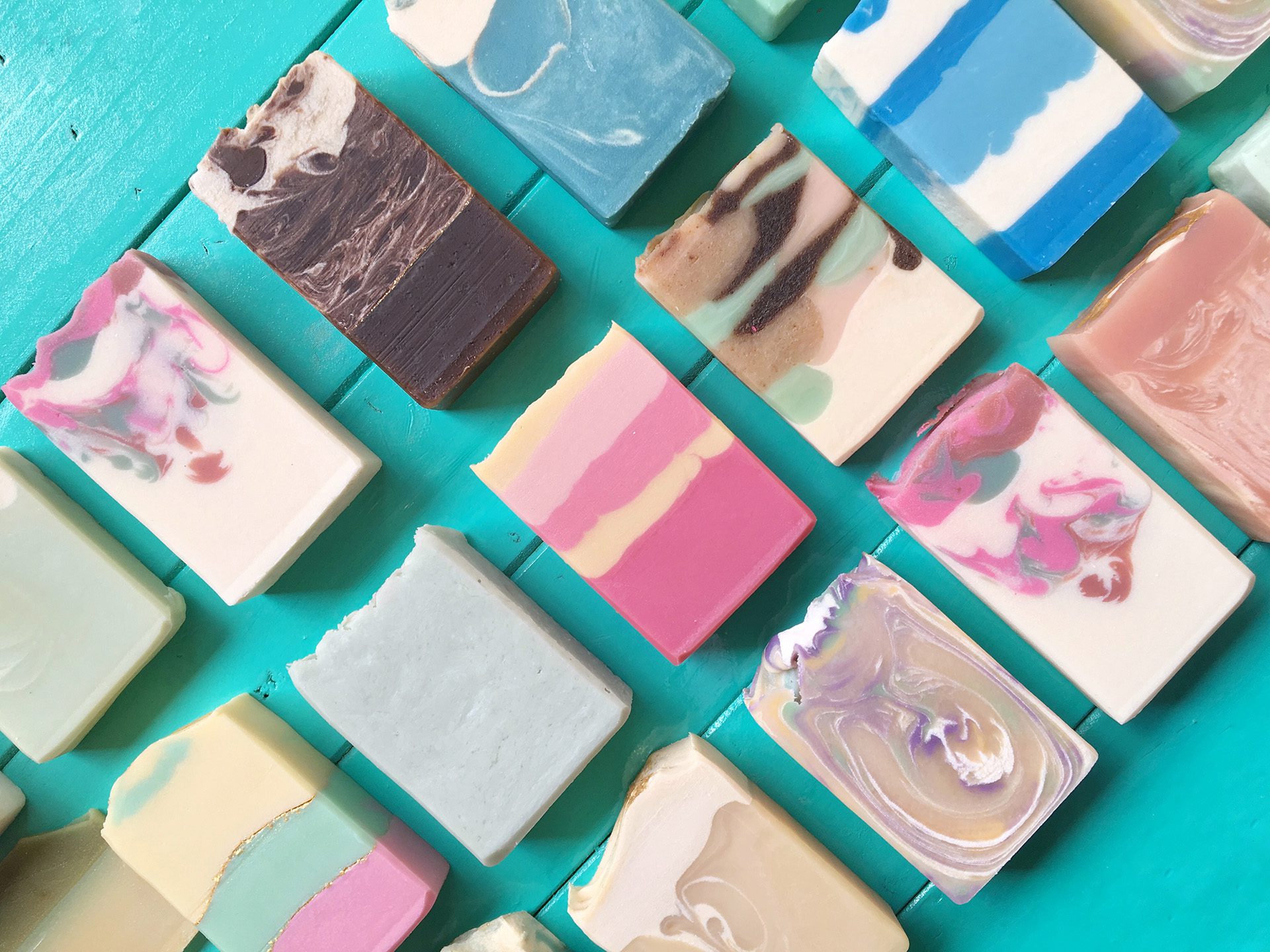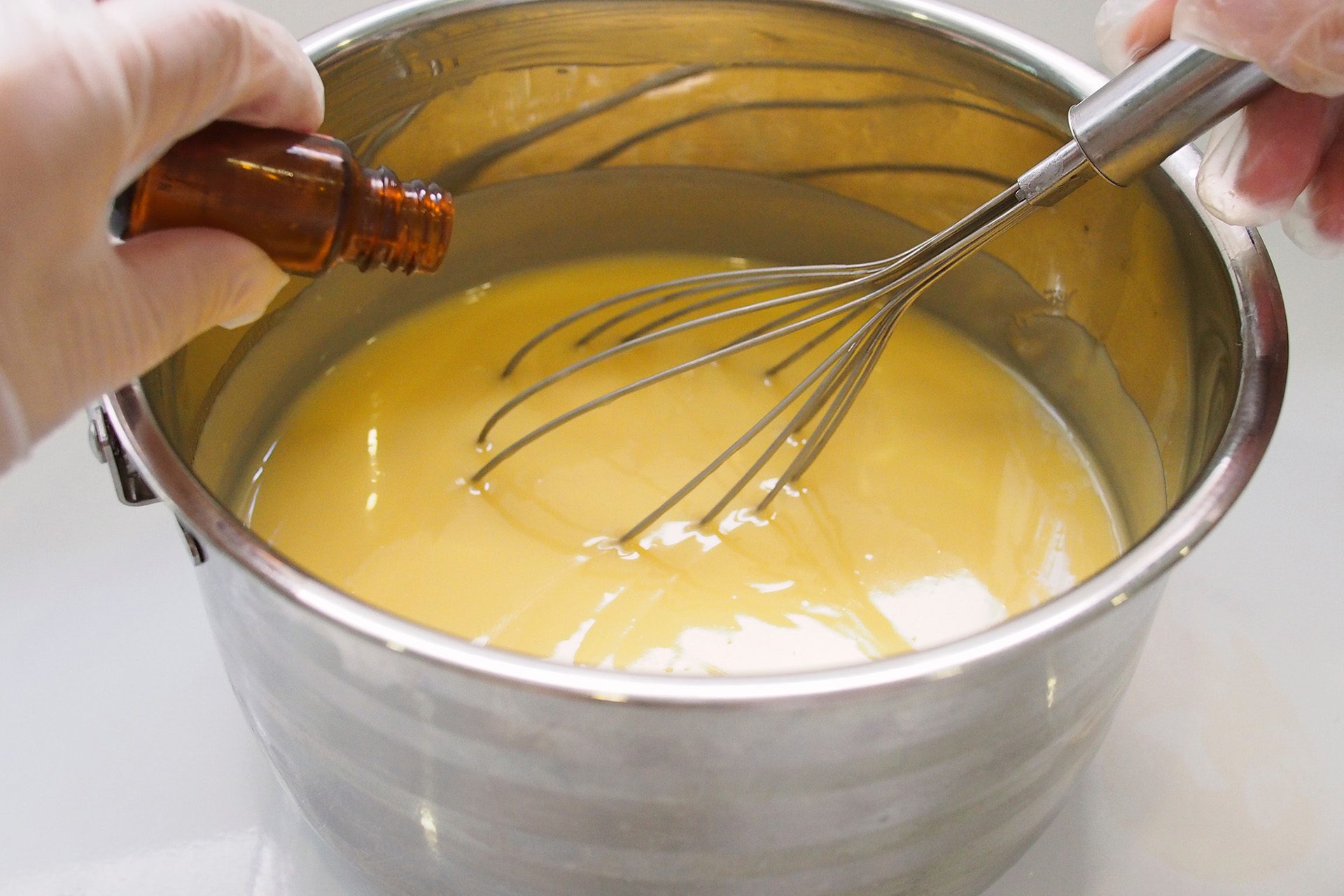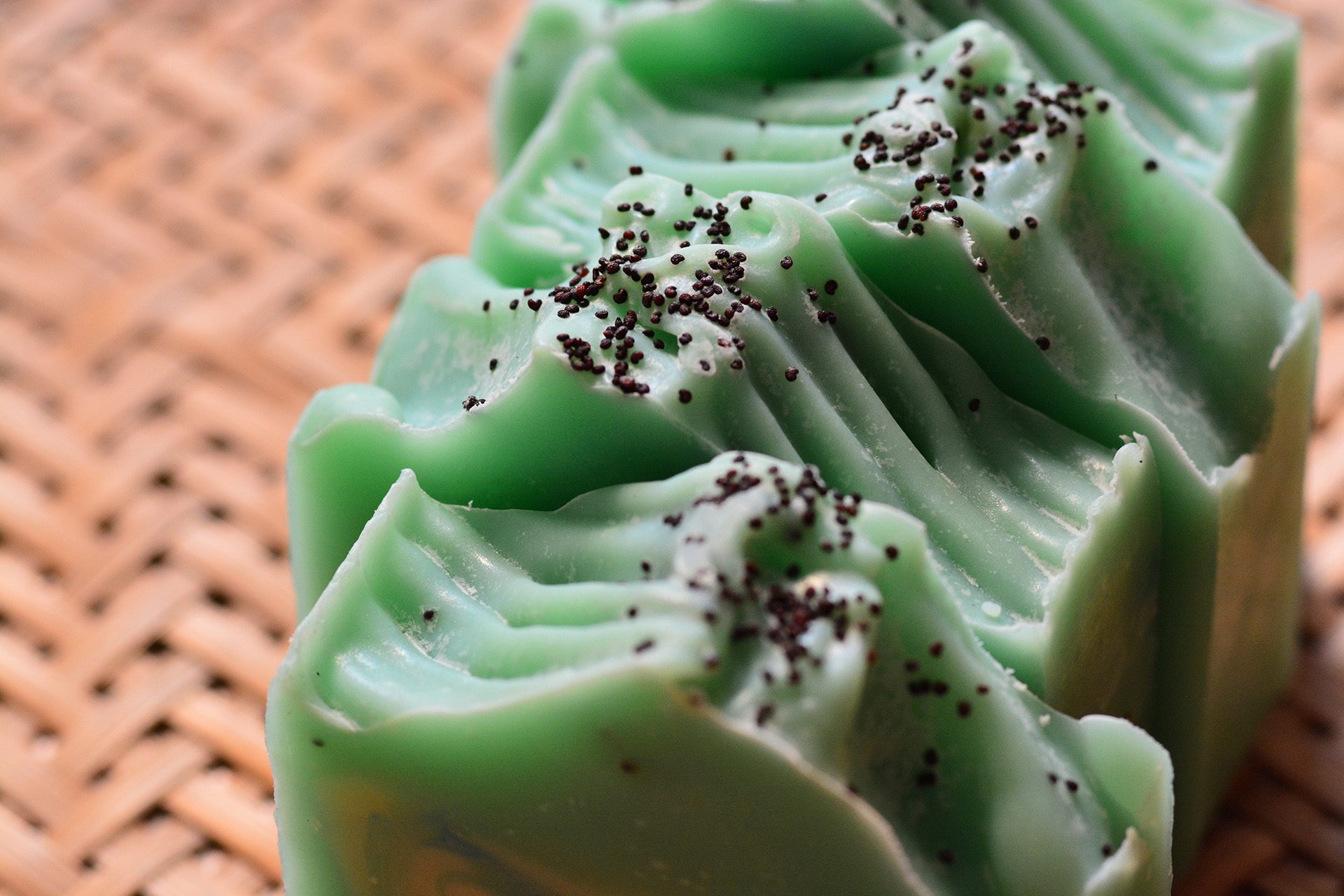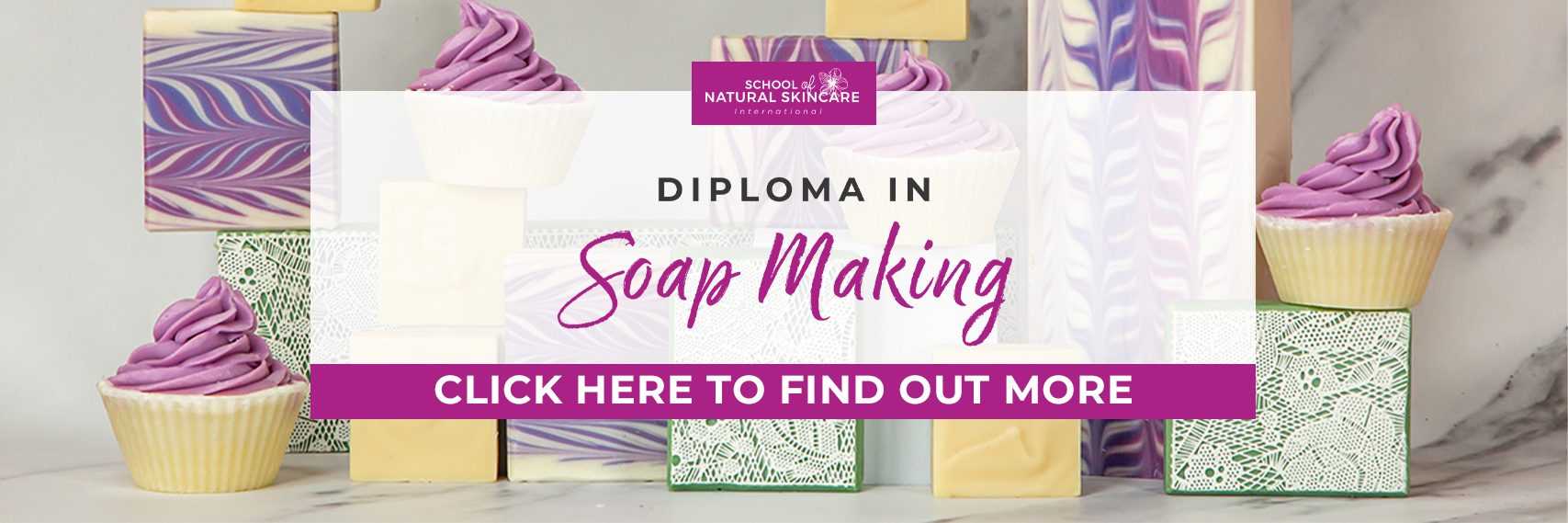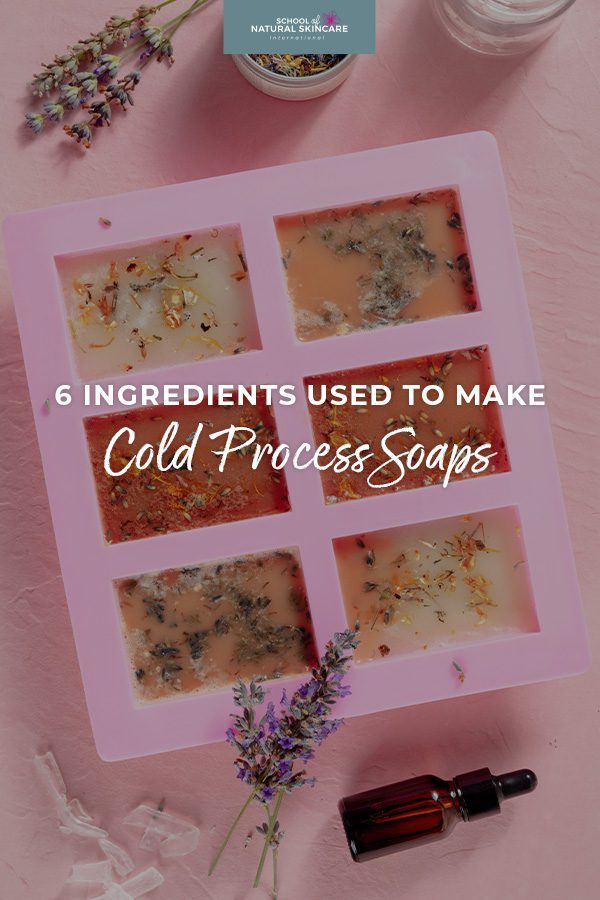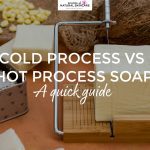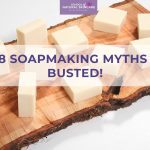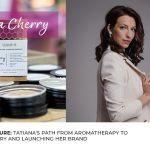Soaps are created by a reaction called saponification, which is a chemical reaction between lye and oil, or better yet between lye and the fatty acids within the oil. The base ingredients that make up natural soap are oils, lye and water.
Depending on the oils in the recipe, the resulting soap can have different properties – different degrees of hardness, cleansing ability, conditioning and foaming capabilities.
Soapmaking recipes are not like cosmetic formulations…
They are not presented in the form of percentages – only the oils are expressed as percentages, and the rest of the ingredients are in grams according to your preferred batch size.
The 3 core ingredients used in cold process soapmaking
- Lye
As we previously learned, lye is one of the key ingredients when making soap. Lye, or sodium hydroxide (if making solid soap), is what reacts with the triglycerides in oil to form soap.
Sodium hydroxide (also known as caustic soda) is usually available as white flakes or pellets. It is important to always be very careful when working with lye – it is extremely dangerous.
You’ll learn all about this in Lesson 1.3 Mandatory Safety Information of our Diploma in Soap Making and our Certificate in Cold Process Soap Making online courses.
Sodium hydroxide can usually be bought in soapmaking shops and other chemical supply stores.
It is best to prepare your lye solution in a well-ventilated area, since the solution heats up very quickly (to about 90°C) and releases harmful fumes. Work outdoors or near an open window, and wear a respirator mask.
The amount of lye we use depends on the types of oil in the recipe and their quantities. Each oil has a different saponification value (often referred to as SAP).
To learn all about saponification values, you’ll want to check out Lesson 1.2 Theory of Saponification of both our Diploma in Soap Making and our Certificate in Cold Process Soap Making online courses.
- Water
It is important to use purified water (deionized) for making soap, as it is much purer than tap water. Tap water contains mineral salts that can cause sliminess in finished soap bars.
When preparing the lye solution, water is weighed using scales, then lye is added to it and stirred until it has dissolved.
The amount of water used to create the lye solution will mainly depend on the amount of lye. Many soapmakers will express the amount of water relative to the total oil weight, ie
the amount of water as a percentage of the oils.
We cover lye to water ratios in Lesson 1.2 Theory of Saponification in both our Diploma in Soap Making and our Certificate in Cold Process Soap Making online courses.
- Oils
The ‘heart’ of the soap are the oils (and butters) – the choice of fats will affect the quality of the soap, its cleansing and nourishing abilities and the speed of saponification.
Different oils/butters have different fatty acid compositions; each fatty acid will impart certain qualities to the finished soap.
An interesting aspect in the creation of a soap is the research of the compositions of the potential oils. This needs to be undertaken in order to make the best choice to obtain the
desired consistency or hardness, the foam produced, the cleansing properties, the after-use emolliency, the benefits for the skin and so on.
These properties are imparted by the chain length of the fatty acids present in the oils, their level of saturation and their ratios.
Therefore, an oil composed of more stearic acid (C18 and saturated) will bring more hardness than an oil composed with more oleic or linoleic acids (C18 and respectively mono- or polyunsaturated), or an oil composed with more lauric acid (C12 and saturated).
On the other hand, the mono- or polyunsaturated fatty acids, although not effective in bringing hardness to the soaps, will bring softness and emolliency.
So, you have a wide choice of oils in many combinations that offer the properties you desire in soaps.
Inside both our Diploma in Soap Making and our Certificate in Cold Process Soap Making online courses, you’ll find an Appendix 1 Fatty Acids in Soap Making where you can learn more about the fatty acid profiles of different oils.
Additives used in Cold Process Soap Making
You can make some lovely soaps with the ingredients listed above, but if you want to add some additional characteristics to your soaps you can also add some soap additives 🙂
The next 3 types of ingredients used to make cold process soap look at these.
- Colorants
Soaps have a natural color depending on the oils in the recipe. Most vegetable oils have a yellowish color, so the soaps end up being a pale yellow color. We can deliberately color the soaps by using oils with strong colors – for example, unrefined avocado oil for a green color, or macerated carrot tissue oil for a yellow to orange color.
We can also add soap colorants to the soap batter.
Colorants can be tricky to use in soapmaking, as they can be pH sensitive and can change their color in the high pH ranges of soap.
This is why it is important to use colorants that are specifically designed to be used in soapmaking.
Very good options are mineral pigments, which are stable and are available in various colors such as blue, purple and pink (ultramarines), green (chromium oxide), red, yellow and black (iron oxides) and zinc oxide and titanium dioxide for white.
Since mineral pigments are prone to forming clumps, the colorant can be predispersed either in a small amount of oil, a small amount of water, or in a small quantity of the soap paste.
Mineral pigments are very concentrated so we add them slowly, drop by drop (of predispersed mixture) into the soap batter until the desired color is achieved. Typically, they would be used at up to 0.5% (of the oil weight).
- Fragrance
It is possible to use ready-made fragrances or essential oils, although it is impossible to know in advance how the essential oils in particular will behave after their incorporation into the soap batter.
In the case of essential oils, some are more sensitive to the reaction of saponification or more difficult to fix in the soap than others.
For instance, citrus essential oils are known to be difficult to use in soapmaking, since they will quickly evaporate from the finished soap.
However, heavier molecules, usually used as base notes, generally work well; for example, lavender, vetiver, cedar or rosemary.
Important: Keep in mind that essential oils derived from spices such as clove and cinnamon will greatly accelerate the chemical reaction.
Fragrances or essential oils are usually used at concentrations of 1-4% of the total oil weight.
- Exfoliants
Soaps can also have exfoliants added, in order to make them exfoliating soaps. We incorporate exfoliants after the trace, just before pouring into the mold. It is important to use insoluble exfoliants, such as ground walnut shells, poppy seeds or pumice powder.
Using soluble exfoliants (like sugar and salt) can affect the saponification, cause the trace to accelerate, or cause the finished soap to be crumbly.
How to make cold process soap?
Making your own cold process soap is great fun and you can do it safely and effectively at home too. You might like to read our article, 6 Benefits of Cold Process Soaps too.
When it comes to making cold process soap at home, or in your lab, you’ll want to make sure you know what you are doing. The chemical reaction involved has to be done carefully and correctly and you’ll need to know about the nuances around making cold process soap vs other cosmetic products, which is not the same process.
Unlike cosmetic formulations, when it comes to soapmaking, we usually do not work with formulas written in percentages. The main reason for this is the fact that the water amount can vary.
So even if a certain quantity of water is stated in a recipe, you can still decide to use a different amount, for whatever reason (for example, you may wish to use more water so your soap batter is more fluid and easier to create swirls with).
The only percentages that are given are the oil percentages: if we list oil percentages (so that all of the oils add up to 100%), we can easily see the ratios between soft and hard oils, between cleansing and nourishing oils, etc.
Soap calculators also follow this principle – the only ingredients expressed in percentages are the oils; the rest are given in grams for a certain batch size.
You’ll want to understand the essential soap making terminology (otherwise it won’t make much sense), the process of saponification, lye concentration and temperature control.
You’ll also want to make sure you follow up-to-date methods – it is extremely difficult to replicate traditional soaps correctly but using the right methods you can get close 🙂
And finally, you’ll want to carefully select the right scales of hardness, detergency, and foam as well as what nourishing properties you want to include.
Fortunately, we have created two online courses called Diploma in Soap Making and Certificate in Cold Process Soap Making
Our Diploma in Soap Making is the most comprehensive soap making course available teaching you everything you need to know to make your own cold process, hot process and liquid soaps as well as advanced soap swirling techniques.
Our Certificate in Cold Process Soap Making focuses purely on making cold process soaps and is split into two sections – Beginner’s Cold Process Soap Making and Advanced Cold Process Soap Recipes.
How do you access the soap making courses?
You can join either of our Diploma in Soap Making or our Certificate in Cold Process Soap Making now. Enrollments are open all year round.
Once you have registered for the class – you do this by registering for the online classroom and making your payment – you will be able to access whichever course you choose immediately and you’ll be able to start straight away. The courses are hosted in our easy-to-use online classroom and you can study them online from wherever you are in the world, in your own time, at your own pace.
Alternatively, if you are already a member of our Natural Cosmetic Formulation Club, you can study the courses inside the Club. You’ll find all the modules hosted inside the “Courses” section of the Club.
We’d be excited to welcome you to the course that best suits your needs and preferences. If you have any questions, please email our customer service team using hello@schoolofnaturalskincare.com. They are on hand to help and would be delighted to hear from you.
Loved learning about these 6 ingredients? Make sure to remember by pinning this!

